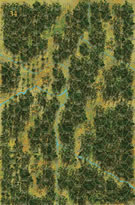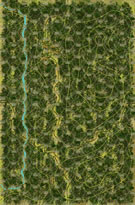|
Counterattack Kokoda Campaign #5 |
||
|---|---|---|
| (Attacker) Australia | vs | Japan (Defender) |
| Formations Involved | ||
|---|---|---|
| Australia |  |
39th "Hawthorn-Kew" Infantry Battalion |
| Japan |  |
144th Infantry Regiment |

| Total | |
|---|---|
| Side 1 | 4 |
| Draw | 0 |
| Side 2 | 5 |
| Overall Rating, 9 votes |
|---|
|
3.67
|
| Scenario Rank: 289 of 913 |
| Parent Game | Kokoda Campaign |
|---|---|
| Historicity | Historical |
| Date | 1942-08-08 |
| Start Time | 08:00 |
| Turn Count | 20 |
| Visibility | Day |
| Counters | 27 |
| Net Morale | 2 |
| Net Initiative | 3 |
| Maps | 2: 34, 35 |
| Layout Dimensions | 86 x 28 cm 34 x 11 in |
| Play Bounty | 145 |
| AAR Bounty | 171 |
| Total Plays | 9 |
| Total AARs | 1 |
| Battle Types |
|---|
| Airfield Control |
| Ambush |
| Surprise Attack |
| Urban Assault |
| Conditions |
|---|
| Hidden Units |
| Terrain Mods |
| Scenario Requirements & Playability | |
|---|---|
| Kokoda Campaign | Base Game |
| Introduction |
|---|
|
After seizing their assigned objective of Kokoda, the Yokoyama Advanced Detachment stopped and sent its engineers back the way they'd come to improve the tracks between the east coast and Kokoda. This would help speed the advance of South Seas Detachment across the Owen Stanley Mountains toward Port Moresby. Meanwhile the Australians holding the trail ahead of them at Deniki started receiving reinforcements from 39th Infantry Battalion (companies straggling up the trail from Port Moresby). But the 39th's new commander, Major Alan Cameron, was not willing to concede the initiative to the Japanese. He resolved to launch a three-pronged counterattack against Kokoda in an effort to recapture the airstrip and bring in further reinforcements and supplies by air. Leaving two companies in reserve at Deniki, he gave each of the other three companies a different assignment in the counterattack. D Company would cut the trail east of Kokoda to block Japanese reinforcements, C Company would assault directly up the track from Deniki and A Company would circle through the jungle for a flanking attack on Kokoda itself. Once A Company had control of the village and airstrip, they were to fire a Verey flare pistol to signal that reinforcements could be brought in by air. |
| Conclusion |
|---|
|
D Company reached its assigned location and set up an ambush that inflicted about 60 casualties on a party of Japanese engineers returning to Kokoda. The Japanese responded by moving a strong force out of Kokoda that forced D Company to go "bush" and separate into small groups to move back to Deniki. That allowed A Company to reach Kokoda undetected and capture the village and airstrip from its few remaining defenders. They fired the Verey signal and dug in to wait for the promised airlift of reinforcements. However, because Australian reconnaissance patrols had failed to locate the main body of the Yokoyama Detachment, Captain A. C. Dean led the untested troops of C Company straight into the main Japanese force. The Australians lacked the numbers to dislodge the Japanese from the trail, and once Captain Dean was killed they moved back into the lines at Deniki. That left A Company unsupported, and when the promised airlift never arrived they were ordered to disperse into the jungle and move back to Deniki in small groups. |
| A brief glimpse of victory |
|---|
|
is all the Australians will get, in this scenario. Two companies of Australian militia amount a counterattack. A Company enters the west side of the northern board, near the airstrip and village of Kokoda. C company enters the south edge of the south board, a long way away from everything except the tiny village of Pitoki. The Japanese have small garrisons in Kokoda and Pitoki, and a large reserve in the middle of the southern board. By scenario special rule, the Japanese cannot move until an Australian unit is spotted , or until turn 8. The Australians use the first few turns to approach their objectives, staying out of sighting range of the Japanese forces. On turn 8, Company A moves up through the airfield adjacent to Kokoda, and Company C surrounds Pitoki. With the Australian forces concentrated, and only small Japanese garrisons ( one platoon each) the militia forces get a rare opportunity to win a pair of assaults. By the end of turn 10, the Australian side has a rare glimpse of victory - they hold the airfield, 3 of 4 village hexes and have an overwhelming assault going in on the last village hex. But it is only a brief glimpse of victory. The Japanese have moved all of their reserve forces toward Kokoda and the airfield, leaving the southern board to the Australian Company C. The Japanese assaults start going in, and the Australian dug in/first fire advantage is not enough to offset the typical column shifts for leadership, better morale, and being Japanese. And in scenarios like this when the Australians have 7/6 morale, compound demoralization is not your friend. An hour of assault combat clears Company A from the village of Kokoda; the remnants retreat west through the airfield without enough strength or morale left to defend the airfield. Company C moves partway up the southern board, but realizes they don't have the strength or the time to affect the battle at Kokoda. Final results - the Japanese kill 13 Australian steps, hold two airfield and three village hexes for 26 points. The Australians kill 5 Japanese steps and hold one village hex for 10 points. Major Japanese victory. I've rated this a four. The forces are by no means balanced, but there is enough space, enough forces, and multiple objectives to give the Australian player some options, and the Japanese player could easily make enough mistakes for the scenario to be competitive. It very much reflects the point the developers make in the campaign notes - the objective may not be so much an absolute victory but rather just the Australians proving to themselves that they can take the offensive and reach objectives, even if they don't have the strength to hold them long term. |
| 0 Comments |

 KoCa004
KoCa004 












